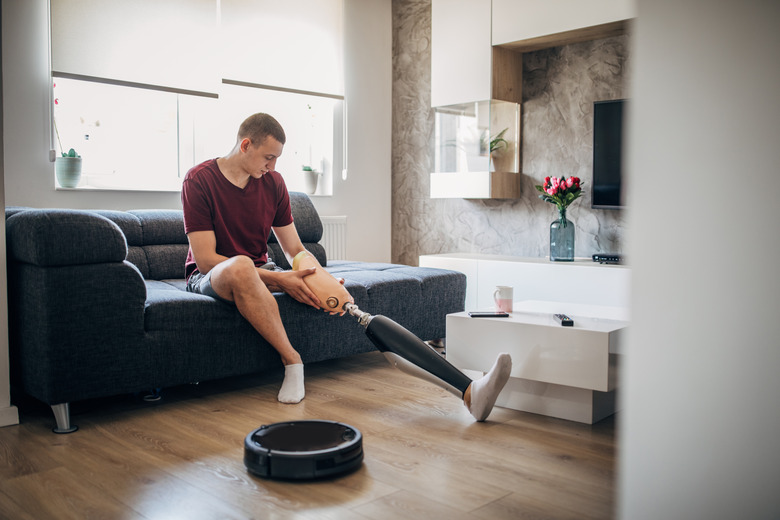New "Robot Skin" Can Feel Pressure, Pain
What if robots could feel pain?
Thanks to researchers at the Daegu Gyeongbuk Institute of Science and Technology (DGIST), they may be able to very soon. According to a release from DGIST, scientists at the university are developing "psychosensory electronic skin technology" that would enable robot skin to feel pain through sense of touch.
Wait, What's Happening?
Wait, What's Happening?
Professor Jae Eun Jang and his team at the DGIST information and communication engineering department say they've developed electronic skin technology that recognizes "hot" and "prick" pain sensations, much like human skin can. This tech came about in collaboration with teams from the brain and cognitive science, information and communication engineering, and robotics engineering departments, according to reporting from Science Daily.
"We have developed a core base technology that can effectively detect pain, which is necessary for developing future-type tactile sensor," Jang said in Science Daily. "As an achievement of convergence research by experts in nano engineering, electronic engineering, robotics engineering and brain sciences, it will be widely applied on electronic skin that feels various senses as well as new human-machine interactions."
Jang added that if he and his team succeed in enabling robots to feel pain, their research will expand further into technology to control the "aggressive tendency" of robots that operate with artificial intelligence. Jang described this tendency as "one of the risk factors of AI development."
What's the Point?
What's the Point?
The plan for Jang's technology is to implement it in a robotic humanoid, which should be able to experience the five human senses. The sensory technology may be implemented in prosthetic hands, as well.
It's not the first time technology has aimed to mimic human senses. That's how the camera and TV came about, for example, and scientists are continuing to attempt replications of tactile, olfactory and palate senses in robot technology. This particular effort builds on efforts to mimic human tactile senses, which is expected to be the next mimetic technology, according to the DGIST press release.
"Currently, most tactile sensor researchers are focusing on physical mimetic technologies that measure the pressure used for a robot to grab an object, but psychosensory tactile research on how to mimic human tactile feeling such like soft, smooth or rough has a long way to go," the release states.
Even so, Jang's current developments allow robotic tactile sensors to feel pain and temperature. This technology can even measure pressure and temperature at the same time, according to reporting from Technology Networks.
Cite This Article
MLA
Swanston, Brenna. "New "Robot Skin" Can Feel Pressure, Pain" sciencing.com, https://www.sciencing.com/prosthetic-skin-feels-pain-13721577/. 9 September 2019.
APA
Swanston, Brenna. (2019, September 9). New "Robot Skin" Can Feel Pressure, Pain. sciencing.com. Retrieved from https://www.sciencing.com/prosthetic-skin-feels-pain-13721577/
Chicago
Swanston, Brenna. New "Robot Skin" Can Feel Pressure, Pain last modified August 30, 2022. https://www.sciencing.com/prosthetic-skin-feels-pain-13721577/
